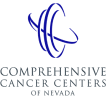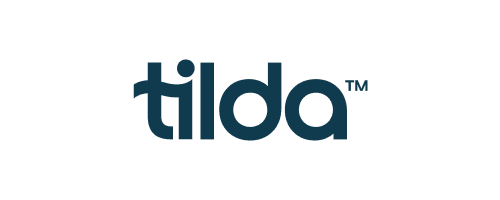Comprehensive Cancer Centers of Nevada Goes Beyond Paper Binders to Enable
Remote Site Monitoring
“For CCCN, SiteVault Free has helped to systematize and speed file uploading to prevent missing GCP documents from delaying a clinical trial’s progress."
Challenges
- Manual processes were dominated by one central paper binder
- Regulatory documentation was not in digital form or accessible in a central, searchable database
- The site lacked the data management foundation needed for remote digital site monitoring
- There were no features in place to allow reviewers and stakeholders to view and collaborate on regulatory documentation
Results
- More than 500 paper GCP documents were digitized and added to SiteVault Free within four months
- Reviewers and study partners can now access, view, and collaborate on documents
- The paper binder is now a secondary, rather than primary, source of regulatory documentation at central headquarters
For decades, clinical research sites have filed regulatory compliance documents for each trial in large plastic binders. Good clinical practice (GCP) documentation alone involves 28 different types of forms, many of which must be circulated, signed, and updated repeatedly. As trials have become more complex and collaborative, documentation challenges have increased—along with the need to automate the traditional manual, paper-based clinical documentation processes.
Streamlined access to regulatory data became imperative during the COVID-19 pandemic, as clinical site monitors could no longer visit research sites in person. That’s when site leaders at Comprehensive Cancer Centers of Nevada (CCCN) decided to modernize its regulatory documentation practices to enable remote site monitoring and improve efficiencies.
Moving beyond the binder
CCCN has a strong clinical track record, and its studies have helped lead to FDA approvals for more than 100 cancer treatments. The site currently conducts more than 170 clinical studies each year, independently and with key partners such as The US Oncology Network, UCLA’s Translational Research in Oncology US, Inc., and Memorial Sloan Kettering. “Collaborative work probably accounts for about 25% to 40% of our studies at any given time,” says Tiffany Gordon, regulatory affairs associate. “For the rest, we work directly with sponsors and contract research organizations (CROs).”
Before COVID-19 imposed travel restrictions, Gordon would typically schedule on-site visits with each of the site’s designated site monitors at critical points during each clinical trial. Once they arrived, however, monitors faced the inefficiencies of working with centralized binders full of papers. “During site visits, all eight site monitors would have to pass around and share that same binder,” Gordon recalls.
The team had to think beyond the binder to make data more accessible once monitors could no longer visit the site. “We didn’t want to have to resend 70 different documents to each of our reviewers for every single audit,” says Gordon.
CCCN is rolling out Veeva SiteVault Free to digitize and better manage regulatory documents that have been kept on paper and in Microsoft Word and stored in binders and on flash drives. The solution will unify and standardize documentation practices, allowing staff, reviewers, and clinical trial partners to access documents quickly and securely, to compare different versions of documents, and to collaborate in real time. By April 2021, after four months, the site had moved 500 paper documents into the system and added regulatory documents for new clinical trials that could only be audited remotely.
Uploading documentation gradually and systematically
CCCN approached the task of digitizing and uploading regulatory documentation into SiteVault Free in stages, starting with centralized regulatory data, then following up with staff training certification and investigator qualification documents.
Now, site staffers can search for documents and standardize management across all ongoing trials. Security is maintained by providing reviewers with password-controlled site access, and collaboration is fostered in real time by reporting dashboards and document version comparison features.
For CCCN, SiteVault Free has helped to systematize and speed file uploading to prevent missing GCP documents from delaying a clinical trial’s progress. The site now preloads documents before each trial’s site initiation visit (SIV), Gordon says. That way, when the site submits information to its Institutional Review Board, all required documents are already in the system. When it’s time for the SIV, monitors receive SiteVault Free credentials for a week so they can check for any documents that they might have missed during the earlier stages of trial startup.
SiteVault Free has also helped staff automate the uploading of new documentation. “Now, as soon as we get new documents, such as protocol signature pages from a trial’s lead investigator, we’ll scan them into our central files, and then immediately put them into SiteVault Free,” Gordon notes.
To help streamline workflow and prevent wasted time and effort, site leaders plan to implement additional features of SiteVault Free, including its eDelegation log, which automates the tracking of clinical trial team study members and their changing responsibilities over time, as well as some eSignature components.
Tips for making a successful transition
Based on her team’s experience modernizing CCCN’s regulatory document management process, Gordon has the following advice for any clinical research site that is contemplating the move from paper to digital.
1. Document the essential requirements for your site, including the key goals for improving your regulatory documentation processes, and communicate those to your vendor. Before contacting potential vendors, important questions to think about with your team, and achieve consensus on, include: Which tasks are taking the most time to complete? What are the top compliance risks? What processes require duplicate data entry or the use of multiple systems?
2. Break the work down into small, manageable chunks. Instead of trying to load all paper-based data into the new system at once, CCCN took a phased approach, which ultimately allowed the site to realize benefits from SiteVault Free quickly. “It took us less than a month to load most of the central documents that we needed into the system,” she says. Loading the central documents allowed them to save time immediately.
3. Don’t be afraid to ask too many questions. Ongoing communication and collaboration with your vendor are crucial to the success of the project. “Whenever we encountered a potential roadblock, I would reach out to Veeva Site Success and have an answer within a few minutes. If there wasn’t a solution, then we would find one together,” recalls Gordon.
CCCN has also benefited from strong user training throughout the project. Once COVID-19 has run its course, monitors will be able to access the site’s regulatory data easily, whether on-site or off.
With SiteVault Free centralizing its regulatory documentation, CCCN’s clinical team expects to see new levels of transparency and efficiency in the way it gathers, manages, and verifies regulatory documents at the site. Paper binders may not completely disappear from the building’s shelves, but they will no longer be the main repositories for GCP and other regulatory data.
Meanwhile, freed from the limitations of the binder, CCCN staff will be able to focus on what they do best: run and manage the clinical trials that help bring better oncology treatments to the patients whose lives depend on them.
Visit Veeva’s SiteVault Free Resource Center.



